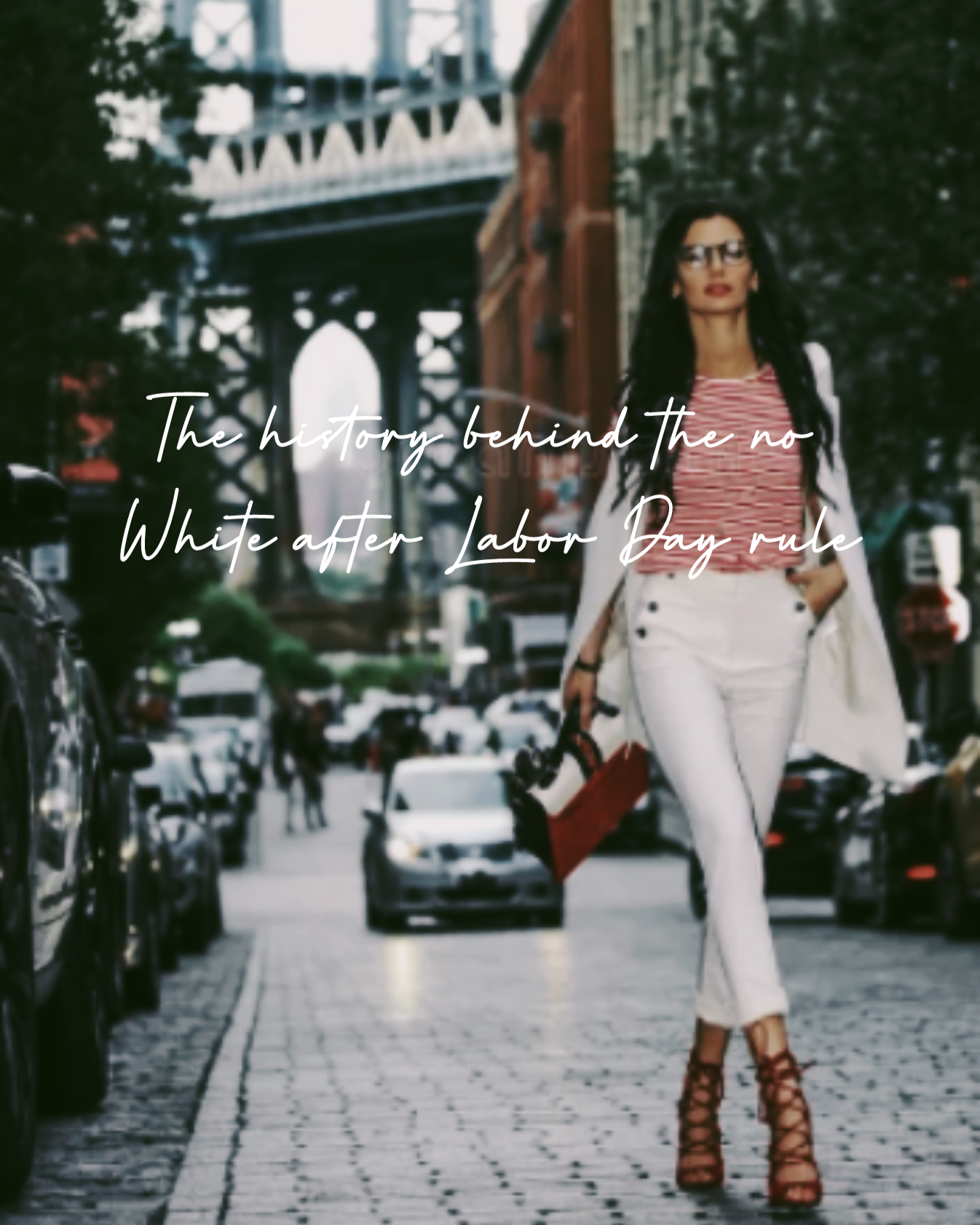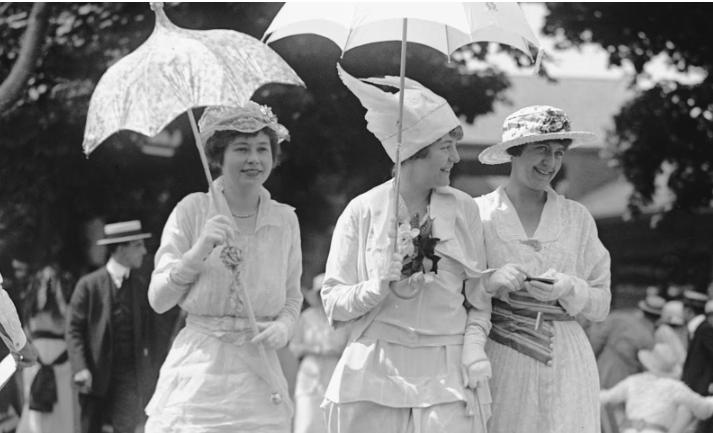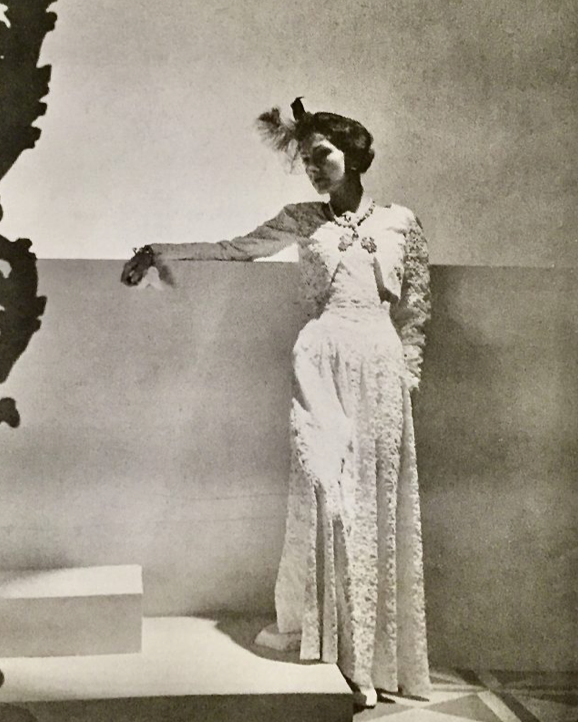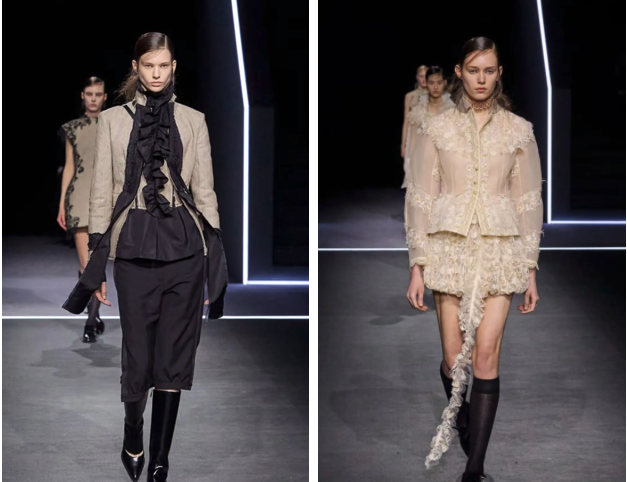The History of “No White After Labor Day” — And Why We Love Winter White
For decades, Fashion came with rules. One of the most famous, “No white after Labor Day”. Where did this ‘rule’ come from and does it still stand today? Let’s dive in.
The exact origins the old adage, no white clothing after labor day can’t be pinpointed. But back in the late 19th and early 20th centuries, white clothing was considered a summer color — a sign of leisure, resort life, and wealth. The Gilded Age families escaping to the shore or countryside would wear crisp white linens and cottons, a stark contrast to the dark, heavy fabrics of city life. Think linen suits, light flowy dresses, tennis and badminton outfits. When the cool weather arrived and families headed back home, the wardrobes shifted back to darker hues, marking the end of the season. Some say it was also an unspoken social code among the elite — "It [was] insiders trying to keep other people out," Valerie Steele, director of the Museum at the Fashion Institute of Technology, told Time "outsiders trying to climb in by proving they [knew] the rules."a way to separate those “in the know” from those who weren’t.
Bettmann Archive
By the 1950s and 60s, the rule was still being whispered in fashion magazines, but designers began quietly pushing against it. Coco Chanel herself famously wore white year-round, proving that elegance doesn’t have an expiration date.
The Allure of Chanel, by Paul Morand, published by Pushkin Press 2017 Translated from the French by Euan Cameron
The CHANEL EFFECT
When Chanel debuted her white jersey suits and relaxed silhouettes in the 1920s–30s, she was making a radical statement: elegance could be simple, comfortable, and seasonless. She wore white not as a “summer only” symbol but as a neutral canvas, layering pearls, tweeds, and black accessories around it. This was revolutionary because it clashed with the rigid dress codes of the social elite.
Other designers of the time were more conservative. Houses like Dior and Balenciaga in the mid-20th century leaned into seasonal palettes — deep jewel tones and dark woolens in fall/winter, pastels and lighter fabrics in spring/summer. White in winter was rare, and when it appeared, it was often reserved for evening gowns, bridal looks, or haute couture pieces.
Where Chanel stood apart was in her insistence that white could be worn in daily life across all seasons. By the 1960s, American designers like Halston and European houses like Yves Saint Laurent began to echo that idea. YSL’s safari suits and ivory tailoring blurred lines between “resort” and “city wear,” much like Chanel had decades earlier.
So while Chanel was the pioneer who challenged the taboo, it took several decades — and other modernist designers following her lead — for winter white to become a true staple.
Today
Fast-forward to today: the old rule has melted away. Fashion has become less about strict guidelines and more about individuality and expression. White has evolved into “winter white” — cream, ivory, bone, and soft eggshell tones that feel luxe and cozy against the heavier textures of fall and winter. Paired with wool, cashmere, leather, and suede, these shades bring a sophisticated brightness to cold-weather wardrobes.
At Dior’s Autumn/Winter showcase, Maria Grazia Chiuri reimagined the most timeless piece of all: the crisp white shirt. Dior took a the classic white buttondown and reinvented it. No longer just a wardrobe basic, it was styled with lace details, trench silhouettes, and bold tailoring. The effect? A fresh reminder that white doesn’t have to whisper summer—it can anchor the drama of winter fashion. Dior’s take proves that simplicity can be theatrical, especially when layered with texture and unexpected pairings.
My take: wear your whites. Just make them seasonal — winter white with texture, weight, and depth. Because confidence is always in style.
'“Today, the only rule that matters is wearing what makes you feel confident. And winter white does exactly that.” - missy
Shop the Look: Winter White
1. The Statement Coat
An ivory wool coat is the ultimate way to break the “rules.”
2. Cozy Knitwear
Think cream cashmere turtlenecks, cable knits, and soft cardigans.
3. Winter White Denim
The easiest way to transition white past summer. Pair with camel boots or a chunky knit.
4. Luxe Accessories
Ivory boots, cream bags, and winter-ready hats bring the look together.
5. The Finishing Touch: Jewelry
Gold against winter white feels warm, luxe, and timeless.



